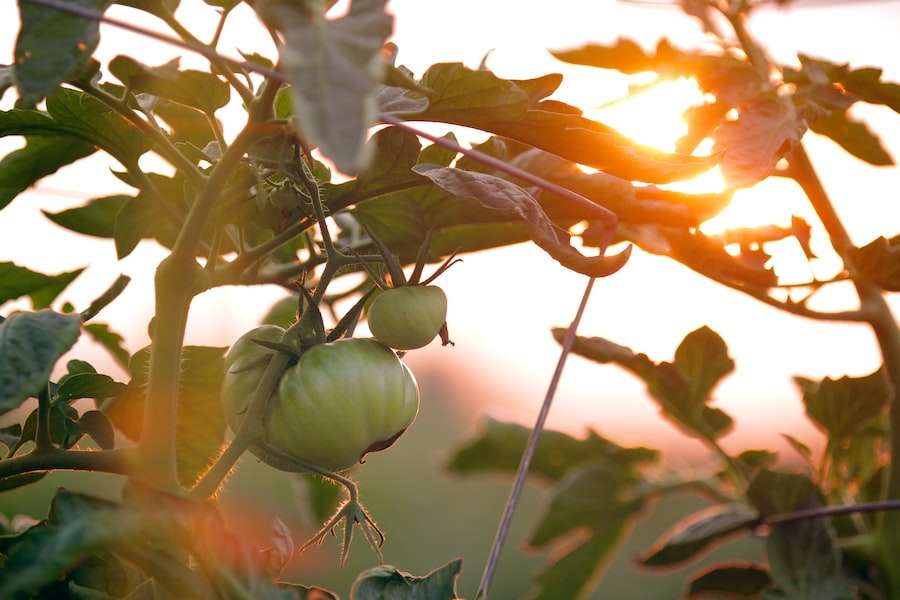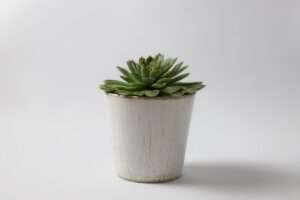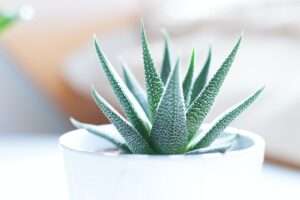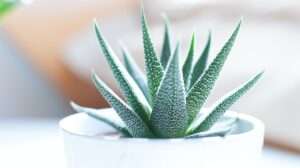Succulent propagation refers to the process of creating new succulent plants from existing ones. This can be done through various techniques such as taking cuttings, leaf propagation, water propagation, division propagation, and grafting. Propagating succulents has become increasingly popular among plant enthusiasts due to its numerous benefits. Not only does it allow you to expand your collection without spending a fortune, but it also gives you the opportunity to share your love for succulents with others. In this article, we will explore the different types of succulent propagation techniques and provide step-by-step guides for each method.
Understanding the Different Types of Succulent Propagation
There are three main types of succulent propagation: sexual propagation, asexual propagation, and natural propagation. Sexual propagation involves the use of seeds to grow new succulent plants. This method is often used by breeders to create new varieties and hybrids. Asexual propagation, on the other hand, does not involve seeds and instead relies on vegetative parts of the plant such as stems or leaves. This method allows for the creation of genetically identical clones of the parent plant. Natural propagation occurs when succulents produce offshoots or pups that can be separated from the parent plant and grown independently.
Choosing the Right Soil and Pot for Succulent Propagation
Choosing the right soil and pot is crucial for the success of succulent propagation. Succulents require well-draining soil that allows excess water to flow out quickly. This is because succulents are adapted to arid environments and are prone to root rot if they sit in waterlogged soil for too long. Sandy or gritty soil mixes are ideal for succulents as they provide good drainage while retaining enough moisture for the plants to thrive.
When it comes to pots, it is important to choose a size that is appropriate for the size of the plant you are propagating. A pot that is too large can lead to overwatering and root rot, while a pot that is too small can restrict the growth of the plant. Additionally, using a pot with drainage holes is essential to prevent water from pooling at the bottom and causing root rot. Terracotta pots are a popular choice among succulent enthusiasts as they are porous and allow for better airflow to the roots.
How to Take Cuttings from Succulent Plants
Taking cuttings is one of the most common methods of succulent propagation. It involves cutting a piece of the stem or rosette from the parent plant and allowing it to develop roots and grow into a new plant. To take cuttings, start by identifying a healthy stem or rosette that is free from any signs of disease or damage. Using clean and sharp pruning shears, make a clean cut just below a node or joint on the stem. This is where the roots will eventually develop.
After taking the cutting, allow it to dry and callous over for a few days to prevent rotting. Once calloused, you can place the cutting in well-draining soil and lightly water it. It is important to avoid overwatering at this stage as it can lead to rotting. Place the cutting in a bright location with indirect sunlight and avoid direct sunlight until it has established roots.
Tips for Successful Leaf Propagation of Succulents
Leaf propagation is another popular method of succulent propagation, especially for plants with rosette-shaped leaves. To propagate succulents from leaves, start by selecting a healthy leaf from the parent plant. Gently twist or cut the leaf from the stem, making sure to keep the base intact. Allow the leaf to dry and callous over for a few days before placing it on top of well-draining soil.
It is important to position the leaf in such a way that the base is in contact with the soil, while the rest of the leaf remains above ground. Mist the soil lightly to provide moisture without overwatering. Over time, the leaf will develop roots and a new plantlet will emerge from the base. Once the new plantlet has grown a few leaves of its own, it can be gently separated from the parent leaf and potted up individually.
Water Propagation: A Step-by-Step Guide

Water propagation is a simple and effective method of propagating succulents. It involves placing cuttings or leaves in water until they develop roots, and then transferring them to soil. Water propagation is particularly useful for plants that are difficult to root in soil or for those that produce offsets or plantlets that can be easily separated.
To propagate succulents in water, start by taking cuttings or leaves as described in the previous sections. Fill a container with clean water and place the cuttings or leaves in the water, making sure that only the base is submerged. Place the container in a bright location with indirect sunlight and change the water every few days to prevent stagnation.
Over time, you will start to see roots forming from the base of the cuttings or leaves. Once the roots are well-developed, you can transfer them to well-draining soil and continue to care for them as you would any other succulent plant.
Division Propagation: When and How to Divide Your Succulent Plants
Division propagation is a method of succulent propagation that involves separating offshoots or pups from the parent plant and growing them independently. This method is particularly useful for succulents that produce offsets or clusters of rosettes.
To divide succulent plants, start by identifying when it is appropriate to do so. Look for offshoots or pups that are well-established and have their own root system. Using clean and sharp pruning shears, carefully separate the offshoots or pups from the parent plant, making sure to keep the roots intact.
Once separated, you can pot up the offshoots or pups in well-draining soil and provide them with the same care as you would any other succulent plant. It is important to avoid overwatering at this stage to prevent root rot.
Grafting Succulents: An Advanced Propagation Technique
Grafting is an advanced propagation technique that involves joining two different succulent plants together to create a new plant with desirable characteristics. This method is often used by breeders to create unique hybrids or to propagate rare or slow-growing succulents.
To graft succulents, start by selecting a rootstock plant and a scion plant. The rootstock plant should be a fast-growing and hardy succulent that will provide a strong root system for the grafted plant. The scion plant should be a desirable succulent with unique characteristics that you want to propagate.
Using a clean and sharp knife, make a diagonal cut on both the rootstock and scion plants. Match the cuts together so that the cambium layers of both plants are in contact with each other. Secure the two plants together using grafting tape or rubber bands.
Place the grafted plant in a warm and bright location, but avoid direct sunlight until it has established. Over time, the two plants will fuse together and grow as one. It is important to monitor the graft site for any signs of infection or rejection and provide appropriate care for the grafted plant.
Common Mistakes to Avoid When Propagating Succulents
While propagating succulents can be a rewarding experience, there are some common mistakes that beginners often make. One of the most common mistakes is overwatering. Succulents are adapted to arid environments and do not require frequent watering. Overwatering can lead to root rot and the death of the plant. It is important to allow the soil to dry out between waterings and to avoid watering on a set schedule.
Using the wrong soil is another common mistake. Succulents require well-draining soil that allows excess water to flow out quickly. Using regular potting soil or soil that retains too much moisture can lead to root rot. It is important to use a sandy or gritty soil mix specifically formulated for succulents.
Not providing enough light is another mistake that can hinder the growth of newly propagated succulent plants. Succulents require bright light to thrive and should be placed in a location with indirect sunlight. Lack of light can cause the plants to become leggy and weak.
Lastly, not giving enough time for propagation is a mistake that many beginners make. Propagation takes time and patience, and it is important to allow the plants to establish roots and grow before expecting significant growth. It is important to provide consistent care and monitor the progress of the propagated plants.
Caring for Newly Propagated Succulent Plants: Dos and Don’ts
Caring for newly propagated succulent plants requires some special attention to ensure their success. Here are some dos and don’ts for caring for newly propagated succulent plants:
Dos:
– Do provide bright, indirect light for the plants to encourage healthy growth.
– Do water sparingly, allowing the soil to dry out between waterings.
– Do monitor the plants for any signs of pests or diseases and take appropriate action if necessary.
– Do provide adequate airflow around the plants to prevent fungal infections.
– Do gradually acclimate the plants to their new environment if they have been grown in water or under different conditions.
Don’ts:
– Don’t overwater the plants as this can lead to root rot.
– Don’t expose the plants to direct sunlight immediately after propagation as they may be more sensitive to intense light.
– Don’t overcrowd the plants in a pot as this can lead to poor airflow and increased risk of disease.
– Don’t fertilize the plants immediately after propagation as they may be more sensitive to nutrients.
Tips for ensuring the success of newly propagated succulent plants:
– Provide a well-draining soil mix and a pot with drainage holes.
– Avoid overwatering and allow the soil to dry out between waterings.
– Gradually acclimate the plants to their new environment to prevent shock.
– Monitor the plants for any signs of pests or diseases and take appropriate action if necessary.
– Provide adequate light and airflow for the plants to encourage healthy growth.
In conclusion, succulent propagation is a rewarding and cost-effective way to expand your collection and share your love for succulents with others. There are various propagation techniques to choose from, including taking cuttings, leaf propagation, water propagation, division propagation, and grafting. Each method has its own benefits and requirements, but with proper care and attention, you can successfully propagate your own succulent plants at home. Remember to choose the right soil and pot, provide adequate light and airflow, and avoid common mistakes such as overwatering. With patience and practice, you will soon have a thriving collection of propagated succulent plants.
If you’re interested in succulent propagation, you might also enjoy reading this article on GirlsGist: “The Slow and Steady Growth of Succulents: A Guide to Understanding How Long They Take to Flourish.” This informative piece explores the timeline and factors that contribute to the growth of succulents, providing valuable insights for succulent enthusiasts. Check it out here.
FAQs
What is succulent propagation?
Succulent propagation is the process of growing new succulent plants from existing ones. This can be done through various methods such as leaf cuttings, stem cuttings, and division.
What are the benefits of succulent propagation?
Succulent propagation allows you to expand your collection of plants without having to purchase new ones. It also gives you the opportunity to create new and unique varieties by combining different types of succulents.
What are the different methods of succulent propagation?
The most common methods of succulent propagation are leaf cuttings, stem cuttings, and division. Leaf cuttings involve removing a leaf from the parent plant and allowing it to grow roots and a new plant. Stem cuttings involve cutting a stem from the parent plant and allowing it to grow roots and a new plant. Division involves separating a mature plant into smaller sections and replanting them.
What are the best conditions for succulent propagation?
Succulent propagation requires warm temperatures, bright but indirect sunlight, and well-draining soil. It is important to avoid overwatering and to allow the soil to dry out between waterings.
How long does it take for succulent cuttings to root?
The time it takes for succulent cuttings to root varies depending on the type of succulent and the method of propagation. Leaf cuttings can take anywhere from a few weeks to several months to root, while stem cuttings can root in as little as two weeks.
What should I do once my succulent cuttings have rooted?
Once your succulent cuttings have rooted, you can transplant them into their own pots or into a larger container with other succulents. It is important to continue to provide them with the proper growing conditions and to avoid overwatering.

















Add Comment